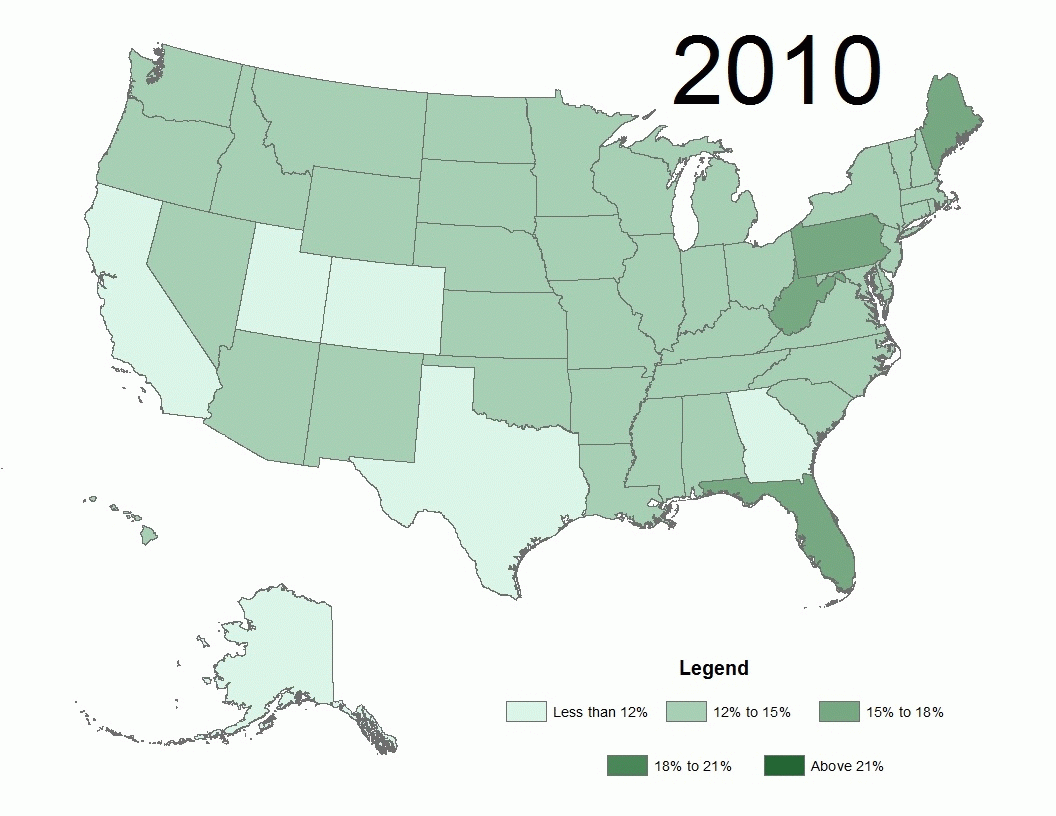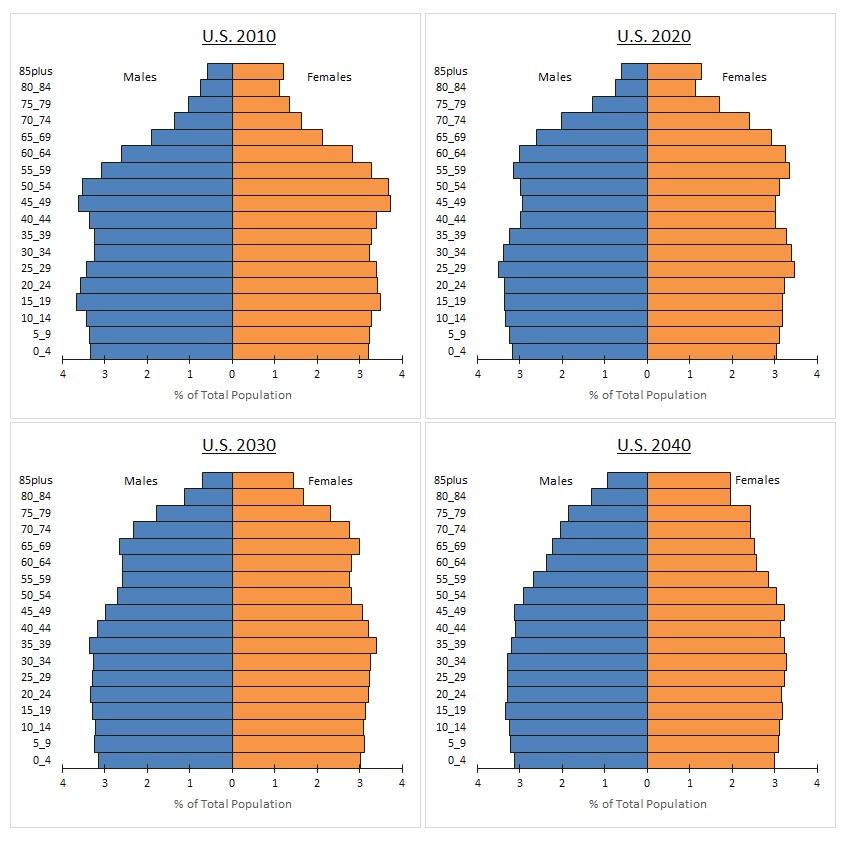Aging into our future: Projecting population age structures

The United States is growing both in size and age, as shown in our recently released population projections for each decade till 2040. My last post was more about the growth in population across the states and identifying commonalities over the projected time horizon. But as we focus our lens on the future, no matter how we examine the numbers, aging seems to be a fundamental underlying theme. By 2020, one in six people, or more than 16% of the population, will be above 65 years of age. The share of older Americans is expected to keep rising to nearly 20% by 2030.
Much of the growth during the 1990-2010 period was fueled by immigration and births to immigrants. The growth dynamics of the decades ahead though are expected to be very different. With the baby-boomers aging into their senior years, the gains in life-expectancy are becoming more and more noticeable. In addition, the continued low birth rate, delayed childbearing, and decline in immigration will over time affect the shape of the U.S. population’s age-distribution. The charts below reflect this clearly with the population pyramid losing its distinct baby boomer and echo boomer edges and evolving into a smooth wine barrel shape, reflecting less growth from births and immigration.

Over the 1990’s and 2000’s, the 65 and older segment of the population accounted for less than a fifth of the total population increase. In contrast, going forward they are projected to account for a majority of the population growth across the country till 2030. For example in 2010-2020 they accounted for 63% of the growth and between 2020-2030 they are expected to account for 57% of the growth in population.

The national median age was 37.2 years in 2010, and is expected to keep rising in the future decades. What is notable is the geographic variation in aging, with New England and the Midwest increasingly becoming the oldest regions in the country, in addition to the popular retirement destinations like Florida and Hawaii. Over the next few decades, Maine consistently maintains the highest median age (with half the population in Maine expected to be older than 48 years by 2040), while Utah has the lowest (at 32 years).
For more details on how these numbers were developed, please visit our National Population Projections webpage.


